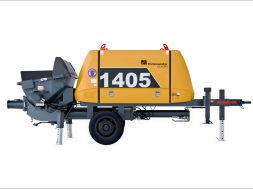
National Steel Policy 2017 also expects 160 kgs per capita steel consumption in the next 10 years
The Indian steel sector contributes approximately 1.4-2 % to its GDP and forms the backbone of the manufacturing industry. The Indian government’s approved National Steel Policy (NSP) 2017 envisages 300 million tonnes (MT) steel-making capacity and 160 kgs per capita steel consumption by 2030-31. India’s steel industry is also expecting to witness a significant rise in steel plants capacity utilization from pre-pandemic times in 2019 where it was 78% to 85% by 2030-31. This will require an incremental capital investment of Rs 10 lakh Cr by 2030-31 and also generate approximately 36 lakh direct and indirect jobs.
The government has taken measures to ensure healthy growth of the steel industry and has also given approval to introduce the Production-Linked Incentive (PLI) Scheme in Specialty Steel to enhance India’s manufacturing capabilities and exports. Many investment projects were announced globally, mainly in infrastructure projects, which significantly consume steel, thus fueling the global demand.
As for the steel prices in the domestic market, they continued to remain on the higher side even in May 2021. Higher steel prices are catalyzed by the global economies and demand for steel. For instance, China is trying to reduce steel exports to increase its domestic supply and in April 2021 they announced that they would end export tax rebates and cut import tariffs for some steel products. These movements will likely benefit India’s domestic integrated steel producers by reducing imports and increasing exports to China.
Moreover, India’s promising economy will accelerate the growth of the country’s metal processing industry. India is rich in metal mineral resources providing the metal processing industry with affordable raw materials. This industry is important as it helps to create a competitive advantage for end-use sectors from where it sees maximum consumption. The metal consumption has been on a rise, however, owing to the low per capita metal consumption, it is expected to grow further. From the stock market perspective, the metal segment can expect to see an upward movement for the next few quarters owing to the restructuring and consolidation of some metal companies over the last few years.
There are several allied sectors such as construction, infrastructure, automotive manufacturing, railways which are traditionally large consumers of metals in the aluminum, copper, zinc, segments and most importantly — steel. India is home to some of the largest steel players such as Jindal Steel and Power (JSPL), TATA Steel, JSW, and Steel Authority of India (SAIL) to name a few. The country’s steelmakers are the second-largest producers of crude steel in the world after China and the third-largest consumer of finished steel after China and the U.S.
When the COVID-19 induced lockdown hit the country in 2020, several steel manufacturers were compelled to stop production or reduce their steel capacity utilization. Additionally, since April 2021 there has been a slight dip in steel production as major players are diverting their resources to produce medical oxygen and help the nation to fight the pandemic. Nonetheless, steel players are expected to make up for their lost production later.
One contributor to this stellar performance of the steel industry is Jindal Steel & Power. They are striving towards achieving great milestones and with global investments of $12bn, JSPL is scaling its capacity utilization and efficiencies to build a self-reliant India. Their efforts can be seen with the work they have carried out even during the lockdown, where they kept their wheels going and continued production with requisite precautions and available workforce. It was a risk but it paid off and resulted in the company’s steel production growing at 8 % quarter-on-quarter in the first quarter, and sales were up 12 %. Riding on the success, the company intends to double the capacity from 6 Million Tonnes Per Annum (MTPA) to 12 MTPA at its Angul plant in Odisha. This growth has also been possible through demand and consumption support from the allied sectors.
It will be interesting to watch how the consolidation in the Indian steel industry pans out. The global policies around the metals industry in terms of import-export are also going to set the framework for an overall economic cycle revival at the micro and macro level. The positive outlook can also be credited to a fine blend of government initiatives, robust domestic demand, and attractive global markets. The steel industry of the country is surely one to look out for in the coming years.
For more info visit: www.jindalsteelpower.com
Cookie Consent
We use cookies to personalize your experience. By continuing to visit this website you agree to our Terms & Conditions, Privacy Policy and Cookie Policy.









